Compact Unit
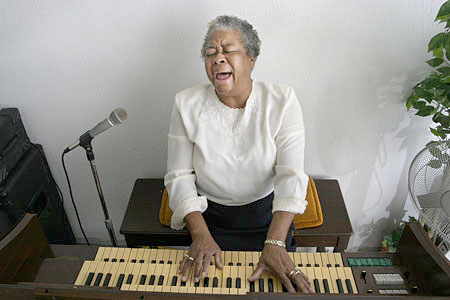
SPRING REVIVAL
Sunday, April 14, 2013
Guest Writer for This Unit: Willie Dwayne Francois III, Minister of Christian Education and Discipleship at Wheeler Avenue Baptist Church and the Director of the Young Ministers’ Corner of The African American Lectionary.
The unit you are viewing, Spring Revival, is a compact unit. This means that it does not have a supporting cultural resource unit and worship unit. Instead, to enliven the imagination of preachers and teachers, we have provided scriptural text(s) that we suggest for this moment on the calendar, along with a sermonic outline and suggested links, books, articles, songs, and videos. For additional information, see Revival in the archives of the Lectionary for 2008–2012.
I. Description of the Liturgical Moment: Spring Revival
The modern English word revival descends from the Latin word revivere, which means to live again. In the context of Christian revivalism, which initially found expression in America during the First and Second Great Awakenings (circa 1730–1740 and 1800–1840), revival related to repentance and conversion.
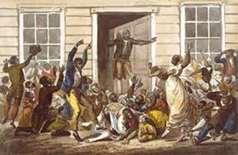 |
Despite the rampant racism and slave structure, a staggering number of African slaves in America entered the Christian life during the Second Great Awakening. The 1906 Azusa street revival, which transcended racial and gender boundaries, also depicted an American materialization of Christian revivalism. |
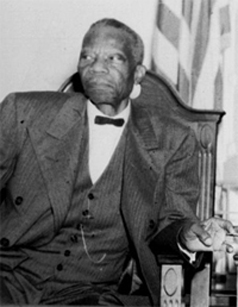 |
The Azusa revivals gave rise to the Church of God in Christ, under the leadership of Charles Mason. The Church of God in Christ is the largest body of African American Pentecostals and likely, today, the largest body of African American Protestant Christians.
Here, I propose an inextricable link between revival and restoration. This existential link acknowledges the various losses visited upon us by the human condition. Actualizing a productive life necessitates revival as multifaceted restoration—spiritual, social, ethical, emotional, physical, and mental, to enumerate some. People, including dutiful disciples of Jesus, need the revitalizing effects of God. |
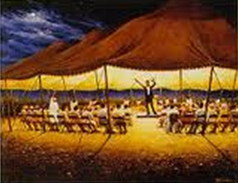 |
Churches conduct revival services in myriad ways. From tent settings to the traditional sanctuary venue, churches host worship services geared at shifting the mood, activity, and commitment of congregants, leaders, and cities. Revivals energize the community and serve as evangelistic platforms. Traditionally, revivals spanned three or five consecutive nights. In recent years, pastors and ministries organize revivals into two or three consecutive nights of worship in a given week, once a week for a given month, or some variation thereof. |
II. Sermonic Outline
A. Sermonic Focus Text(s): Luke 17:11-19 (New Revised Standard Version)
(v. 11) On the way to Jerusalem Jesus was going through the region between Samaria and Galilee. (v. 12) As he entered a village, ten lepers approached him. Keeping their distance, (v. 13) they called out, saying, ‘Jesus, Master, have mercy on us!’ (v. 14) When he saw them, he said to them, ‘Go and show yourselves to the priests.’ And as they went, they were made clean. (v. 15) Then one of them, when he saw that he was healed, turned back, praising God with a loud voice. (v. 16) He prostrated himself at Jesus’ feet and thanked him. And he was a Samaritan. (v. 17) Then Jesus asked, ‘Were not ten made clean? But the other nine, where are they? (v. 18) Was none of them found to return and give praise to God except this foreigner?’ (v. 19) Then he said to him, ‘Get up and go on your way; your faith has made you well.’
B. Possible Titles
i. Moving Forward
ii. A Fresh Start
iii. Risky Revival
C. Point of Exegetical Inquiry
 |
In Luke 17:11-19, we enter a world of marginalized persons longing for reunion and some productive semblance of normalcy. These ten persons have leprosy and are subsequently pushed to the periphery of their communities. Also, in addition to skin discoloration, numbness is a symptom of leprosy. Due to this symptom of leprosy, these persons in the Lukan text have lost the capacity to feel physically. This encounter with Jesus carried with it the gift of feeling, the restoration of their nervous faculties. These individuals were afforded the capacity to feel again physically and spiritually. What a revival! Likewise, this text allows the reader and writer to engage the way social peripheralization is disrupted by encounters with Jesus. This can lead to revival in our thinking and our doing. After they are healed, the former lepers can reintegrate into society. This a revival for their family and friends and the community too. |
III. Introduction
In 1973, Ursula K. Le Guin penned a children’s short story that captured through a socio-philosophical parable the denial and indifference that mark our world. In The Ones Who Walk Away from Omelas, this American author offers a narrative of a utopian city populated by the prosperous, intelligent, happy, and cultured. On the wide surface of this community, one could only see the frivolity, success, and elation of living in Omelas. The grandeur and tranquility of residing in this city necessitated the acceptance and persistence of one problem. The good fortune of Omelas required that a single child be kept in perpetual filth, darkness, and misery—secluded in a closet of filth. Upon coming of age, all the citizens of Omelas were informed that the prosperity of the city and her residents requires the disinheritance of one child. As long as one child could be confined in abject destitution, the remainder of the city could prosper.
Those whose hearts were gripped by this unnecessary atrocity walked away from the individualized and self-concerned bliss. However, the majority of the Omelas populace made the material attainment and self-advancement worthwhile to remain in spite of the child. Le Guin tells a story of so many people accepting the reality of an egregious problem for individual gain and positive public perception.
That’s not too dissimilar to the world in which we live. Can we see the stark parallels? People meander through the world with makeshift ignorance or purposeful blindness of the problems plaguing the world. Like Omelas, our society chooses to adopt ignorance of the higher rates of black unemployment, higher rates of incarceration of black and brown bodies, higher infant mortality rates in minority communities, lower college admission rates in communities of color, racial hostility, and community displacement. A blind eye is given to these realities in an attempt to perpetuate the myth of America being the land of the free and hope of the world. In Omelas, they locked up their problem in a closet, but in America we displace our so-called problems to ghettos and prisons. As in America and Omelas, our text features problems and people locked away so a society could limp along as if the problem did not exist. In our text, we find lepers cast to a colony designed to separate them from functional society—out of sight and out of mind. This is a clear moment for revival.
IV. Moves/Points
Move/Point One – Renewal results from unexpected encounters.
a. A matter of location. As a rule, lepers were quarantined to secluded and secured colonies, a form of ghettoes. It was uncommon for lepers to mobilize beyond the confines of the colony. The text ambiguously offers the setting of this scene as a “certain village.” It can be argued that this location is a leper colony. Jesus ventures into unexpected places.
b. A matter of initiation. The text gives no indication that the lepers were searching for Jesus. How could they know that Jesus would be utilizing a route along the border of Galilee and Samaria that intersected with this unnamed village? However, they did not allow the unlikely and unplanned episode with Jesus to limit the possibility of healing. They seized the power of the moment.
c. A matter of motivation. The lepers’ actions suggest that they foster some understanding of Jesus’ capacity and identity. They flag him down with the public prayer, “Lord, have mercy on us.”
Move/Point Two – Renewal resists unnecessary endeavors.
Focus on the actions of the Samaritan who returned. Jesus prods the ten lepers to show themselves to the priest, which could be a great risk if healing had not occurred. The priest possessed the power to ratify the reentry of former lepers into society. However, the Samaritan returns to Jesus. Why would a Samaritan show himself to a Jewish authority in light of the long-held distain between the two groups?
a. Retreat from the crowd. The healed Samaritan turns away from the other nine to return to Jesus. Although the nine continue to secure validation of their healing, the Samaritan breaks ranks once he recognizes that he is healed. His course of action is not deterred by the resolve of the others. Although they all received the instantaneous blessing and had been relegated together for the tenure of their malady, he does not consult with them before returning to Jesus. No reason is posited as to why the nine do not follow him.
b. Retreat from convention. Perhaps the Samaritan returns to Jesus because he realizes that the Jewish priest will not accept or readmit him into the society even if he is healed of leprosy. Samaritans were discriminated against because of their lineage. Being healed of leprosy would not change that socio-political dynamic for this man. He breaks from conventions and returns to Jesus. He does not waste time pandering to a system that will not accept his healing and humanity.
Move/Point Three – Renewal requires unique expressions.
Focus on the unique occurrences in the pericope.
a. Move with gratitude. The Samaritan returns to Jesus praising God, but arrives at Jesus in worship. “He prostrated himself at Jesus’ feet and thanked him.” This expression connotes worship. Every revival requires a response of thanksgiving.
b. Move into the unknown. “Get up and Go.” Jesus does not micromanage his journey. He informs him of the power of his faith and sends him into the world. Where will he go? Back to his Samaritan family? Somewhere he has never been? The text is silent on those questions. However, wherever he goes life will not be the same. He has the power of his faith to guide and aid him.
c. Move into more. In the Greek, we have two different words that reference the healing: Iathe (verse 15) and Sozo (verse 19). Iathe denotes the physical healing of a malady or illness. According to the information available to us in the text, all 10 get iathe, but Jesus pronounces sozo on this unlikely subject, the Samaritan. The first word simply denotes a physical healing, but sozo denotes wholeness and salvation. He gets more than he expected because of his demonstrative expression of gratitude. Through revival, we too get more than we expect; our minds are cleared, our hearts are uplifted, and our will to act for the Savior in whom we believe is renewed.
V. Celebration
This Samaritan receives more than he prayed for. That’s just like our Lord, anticipating what we cannot anticipate for ourselves. Sometimes our prayers are trapped by our finite understandings of our capacities and situations, but God’s doing is not limited to our little prayers. God meets needs beyond our naming them. God provides beyond our pronouncements. God satisfies beyond our saying it or knowing. God gives victories beyond our verbalizations. God comforts beyond how we claim it. After the trauma the lepers suffered in life, you don’t simply need a healing; you need wholeness to get beyond all of the parts of your past. God gives more than we expect. God is the author of revival.
“Now to him who is able to do immeasurably more than we ask or imagine, according to his power that is at work within us” (Ephesians 3:20). I trust God to work according to his omniscience. He knows more, can do more, and is more than we can conceive. God is able to revive, renew, revitalize, repair, and restore. God is faithful to revive, renew, revitalize, repair, and restore. Echoing the words of the venerable hymn writer Thomas Chisholm, to all of that I say:
Great is Thy faithfulness!
Great is Thy faithfulness!
Morning by morning new mercies I see.
All I have needed Thy hand hath provided;
Great is Thy faithfulness, Lord, unto me!
VI. Illustrations
More Than I Expected
I abhor going to shopping malls and outlets. I prefer to explore the Internet for my shopping needs. Last year, I purchased a shirt from the Express website. For their so-named valued customers, they say: “If we do not have the article you ordered in stock, may we substitute?” One has the option of checking the yes or no box. The third time that I checked “yes” they sent me a shirt that was worth double the price of the black and white checkered button-down I originally requested. After your order is confirmed, they immediately forward an electronic receipt to your listed e-mail address. The company explained, “We are sorry we do not have the article in stock which you ordered. We are sending you something better at our expense.”
After that satisfying first experience, I said to myself, “I will always check the ‘yes’ box at the bottom of the screen, because I know I will not be disappointed by the substitution.” Likewise, when we pray to God, it is advantageous that we are willing to let God take our weak prayers and answer them according to His will. Paradoxically, we pray to God for things guided by our present capacities and shortsighted gaze. Lord, feel free to substitute my limited, band-aid desires for your better blessings.
We Cry Together
Prayer is our means of communing with Jesus. However, there is a certain amount of vulnerability that is needed if communication is to be obtained. In one of the most emotionally gripping scenes in the movie Antoine Fisher, the main character, in a moment of total vulnerability, breaks down and cries while reciting an original poem to his counselor-turned-mentor. Hear Antoine’s words:
“Who will cry for the little boy, lost and all alone?
Who will cry for the little boy, abandoned without his own?
Who will cry for the little boy, who cried himself to sleep?
Who will cry for the little boy, he never had for keeps?
Who will cry for the little boy, who walked the burning sand?
Who will cry for the little boy, the boy inside the man?
Who will cry for the little boy, who knows well hurt and pain?
Who will cry for the little boy, he died and died again?
Who will cry for the little boy, a good boy he tried to be?
Who will cry for the little boy, who cries inside of me?”
Sisters and brothers in Christ, if we are willing to be vulnerable and share our whole selves, our hopes, our hurts, and our hang-ups, we too have a mentor and counselor in Jesus. Moreover, in the movie, Fisher testifies that he cries for himself; the counselor doesn’t cry—only Fisher. But our counselor Jesus is above Antoine’s counselor. Jesus won’t let us cry alone. He said He’d never leave us or forsake us. That means even in our crying and tears Jesus is there crying with us.
| —Napoleon Harris, Norwalk, Connecticut |
VII. Sounds, Sights, and Colors in This Passage
| Sounds: | The voice of Jesus; the faint voices of the lepers; the praise response of the Samaritan; nine people walking away; |
| Sights: | A dirt road; leprous skin; ten people needing healing; a Samaritan prostrate before Jesus; lepers walking away from Jesus; and |
| Colors: | Pale skin; white sores; yellow pus from leaking boils; and the bleak colors of a lepers colony. |
VIII. Songs to Accompany This Sermon
A. Well-known Song(s)
- You’ve Been So Faithful. By Eddie James
- Changed. By Walter Hawkins
- God Specializes. By Gloria Griffin
B. Modern Song(s) (Written between 2005–2012)
- The Best Is Yet to Come. By Donald Lawrence
- Deeper. By Darius Paulk
- The Journey to the Cross. By Myron Butler and Jamar Jones
C. Spiritual(s)
- Revive Us Again. By William P. Mackay. Tune by John J. Husband
- Victory Is Mine. By Dorothy Norwood and Alvin Darling
- Great Is Thy Faithfulness. By Thomas O. Chisholm and William M. Runyan
- Precious Jesus. By Thomas Whitfield. Arr. by William S. Moon
D. Liturgical Dance Music
- When I Think about Jesus. By Public Domain and Kirk Franklin
- Desperate People. By Heidi Stampley and Micah Stampley
E. Song(s) for the Period of Prayer
- Renew Me. By Malcolm Williams
- Endow Me. By Twinkie Clark
F. Sermonic Selection(s)
- What He’s Done for Me. By James Hall
- We Need a Word from the Lord. By Thomas Whitfield
G. Benediction Song(s)
- When Praises Go Up. By Bryant Jones
- Set the Atmosphere. By Kurt Carr
IX. Videos, Audio, and/or Interactive Media
- “Revival and Reformation” by C.D. Brooks. Online location:
https://www.youtube.com/watch?v=UUzSHFQFgBE accessed 19 November 2012.
- “Send a Revival” by Keith Wonderboy Johnson. Online location:
http://www.youtube.com/watch?v=AOTOHgjGtL accessed 19 November 2012.
- “Send a Revival” by Willie Neal Johnson & The New Gospel Keynotes. Online location:
https://www.youtube.com/watch?v=BjIlpW-3vNc accessed 19 November 2012.
X. Books to Assist in Preparing Sermons, Bible Studies, and/or Worship Services Related to Revival
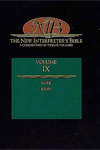 |
Culpepper, R. Allen. “Luke” in The New Interpreter’s Bible, Vol. IX: Luke-John. Nashville, TN: Abingdon Press, 1996. |
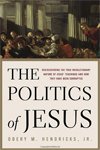 |
Hendricks, Obery M., Jr. The Politics of Jesus: Rediscovering the True Revolutionary Nature of Jesus’ Teachings and How They Have Been Corrupted. New York, NY: Random House, 2006. |
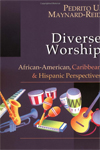 |
Maynard-Reid, Pedrito U. Diverse Worship: African-American, Caribbean & Hispanic Perspectives. Downers Grove, IL: Intervarsity Press, 2000. |
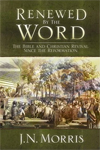 |
Morris, J. N. Renewed by the Word: The Bible and Christian Revival Since the Reformation. Peabody, MA: Hendrickson Publishers, 2005. |
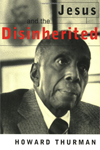 |
Thurman, Howard. Jesus and the Disinherited. Boston, MA: Beacon Press, 1976. |
- “Youth Revival Ideas.” Online location: http://www.ehow.com/info_8159448_youth-revival-ideas.html accessed 22 January 2013.
- Songs and Hymns of Revival. Online location: http://hymnal.calvarybaptistsv.org/ accessed 22 January 2013.
XII. Notes for Select Songs
A. Well-known Song(s)
- You’ve Been So Faithful. By Eddie James
Location:
James, Eddie & The Phoenix Mass Choir. Higher. Denver, CO: Intersound, 1995.
- Changed. By Walter Hawkins
Location:
Gospel Legacy. Nashville, TN: Light Records, 2008.
- God Specializes. By Gloria Griffin
Location:
Cleveland, James and Shirley Caesar. R.A.W Gospel Series: The King and the First Lady. Excelsior, MN: Liquid 8, 2005.
B. Modern Song(s) (Written between 2005–2012)
- The Best Is Yet to Come. By Donald Lawrence
Location:
Various Artists. 8 Great Hits: Men of Gospel. Brentwood, TN: EMI, 2006.
- Deeper. By Darius Paulk
Location:
Sapp, Marvin. I Win. New York, NY: Verity, 2012.
- The Journey to the Cross. By Myron Butler and Jamar Jones
Location:
Butler, Myron & Levi. Revealed…Live in Dallas. Brentwood, TN: EMI, 2010.
C. Spiritual(s)
- Revive Us Again. By William P. Mackay. Tune by John J. Husband
Location:
African American Heritage Hymnal. Chicago, IL: GIA Publications, 2001. #569
- Victory Is Mine. By Dorothy Norwood and Alvin Darling
Location:
Zion Still Sings for Every Generation. Nashville, TN: Abingdon Press, 2007. #123
- Great Is Thy Faithfulness. By Thomas O. Chisholm and William M. Runyan
Location:
African American Heritage Hymnal. #158
- Precious Jesus. By Thomas Whitfield. Arr. by William S. Moon
Location:
Zion Still Sings. #157
D. Liturgical Dance Music
- When I Think about Jesus. By Public Domain and Kirk Franklin
Location:
Franklin, Kirk & the Family. Watcha Lookin’ 4. Inglewood, CA: Gospocentric, 1995.
- Desperate People. By Heidi Stampley and Micah Stampley
Location:
Stampley, Micah. One Voice. Nashville, TN: Interface, 2011.
E. Song(s) for the Period of Prayer
- Renew Me. By Malcolm Williams
Location:
Renew Me. Evergreen Park, IL: Genesis, 2003.
- Endow Me. By Twinkie Clark
Location:
Coko. Grateful. New York, NY: Verity, 2003.
F. Sermonic Selection(s)
- What He’s Done for Me. By James Hall
Location:
God Is in Control. Denver, CO: Intersound, 1995.
- We Need a Word from the Lord. By Thomas Whitfield
Location:
The Best of Thomas Whitfield. New York, NY: Verity, 1999.
G. Benediction Song(s)
- When Praises Go Up. By Bryant Jones
Location:
Chicago Mass Choir. Windy City Hits: The Best of Chicago Mass Choir. Nashville, TN: Light Records, 2004.
- Set the Atmosphere. By Kurt Carr
Location:
Carr, Kurt & The Kurt Carr Singers. Set List: The Very Best of Kurt Carr & The Kurt Carr Singers Live. Inglewood, CA: Gospocentric, 2011.
Note
The image featured at the top of this unit is of Sister Mary Ann Carroll, who has sung and played piano during many revivals.



